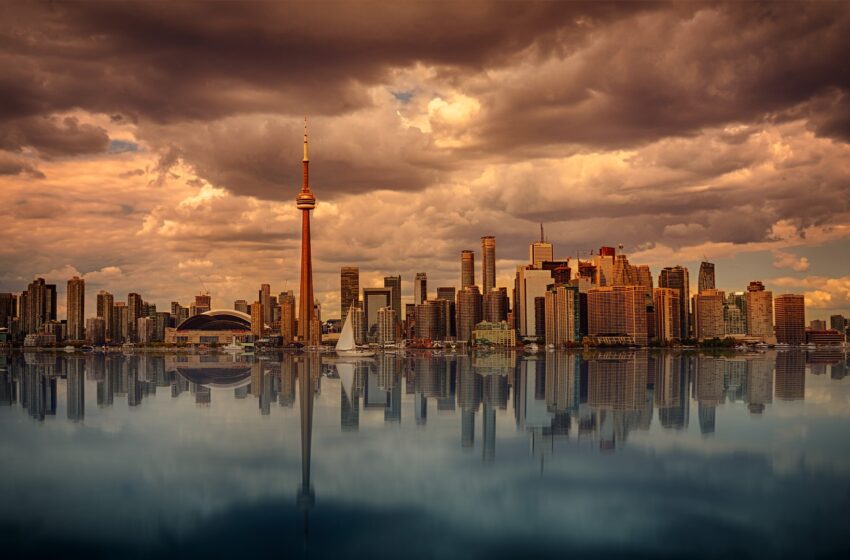
Canada’s Only Travel Guide You Need For A Great Trip in 11 Easy Steps
- Destinations Americas
Cruisit Team
- June 30, 2022
- 0
- 4734
- 81 minutes read
Canada’s Background
When Europeans first arrived in what is now Canada in the 16th century, an estimated 200,000 First Nations (Indians) and Inuit were living there. For the following 200 years, the indigenous population fell, owing to European territorial invasion and illnesses introduced by settlers. Native Americans, who are estimated to have inhabited the lands as far back as 14,000 years ago, were also mistreated and killed for centuries. The French explorers Pierre de Monts and Samuel de Champlain built the first European settlements north of Florida in 1604, first on St. Croix Island (in present-day Maine), then at Port-Royal, in Acadia (present-day Nova Scotia). Champlain constructed a stronghold in what is now Québec City in 1608.
Canada’s primary political challenge is satisfying public demands for quality improvements in health and education. The country became a self-governing dominion in 1867 while maintaining links to the British throne. In recent years, the question of reconciling Quebec’s francophone history with the majority anglophone Canadian population has been pushed to the back burner. Support for secession has waned after the Quebec government’s vote on independence failed in 1995.
Sure, at first glance, Canada may appear to resemble the country with which it shares a border to the south, and it does seem very similar, but don’t be fooled. This country is keen to separate itself from its American neighbor, and you might even argue that Canadians are a bit kinder, more relaxed, and, of course, colder, way colder.
To begin with, this multicultural country has two official languages, which are French and English. Then there’s Quebec, a culturally distinct province with cities like Montreal and Quebec City that feature a rare European old world that meets a contemporary city mix that’s unrivaled in North America. Canada is also known for its tolerance and even peace, except when it comes to ice hockey! As a highly developed nation rich in natural resources and a great destination for seemingly endless snowy slopes for snowboarders and skiers, Canadians enjoy a fairly comfortable lifestyle where the country is generous in providing its citizens with social services, most notably universal healthcare, which is non existent in the US.
The world’s second-largest country boasts an infinite diversity of scenery in the great outdoors, which draws many people. There are sky-high mountains, gleaming glaciers, ghostly jungles, and secluded beaches dispersed over six time zones. They serve as the setting for many ah-inspiring moments, as well as a large ensemble of local individuals. That’s large as in polar bears, grizzly bears, whales, and, of course, moose.
“This stunning and diverse ice-cold piece of North America captivates its tourists. With its cosmopolitan atmosphere, mountain treks and skiing, and wonderfully polite Canadians, visitors to Canada will contemplate where old and modern worlds merge.“
Adventures abound, whether you’re skiing Whistler’s slopes, surfing Nova Scotia’s swells, wreck diving in the turquoise seas off the Bruce Peninsula, or kayaking the white-frothed South Nahanni River in the Northwest Territories. There are other softer choices, such as wandering around Stanley Park in Vancouver or swimming off the pink-sand beaches of Prince Edward Island.
Sip a café au lait and bite into a flaky croissant at a sidewalk bistro in Montréal; slurp noodles or visit an Asian night market in Vancouver; discover Toronto’s vibrant performing arts scene; join a wild-fiddling Celtic party on Cape Breton Island; and kayak between rainforest-cloaked indigenous villages on Haida Gwaii: Canada is immensely diverse, both geographically and within its cities. It will be heard in music, seen in the arts, and tasted in national dishes.
If you nibbled your way across the nation from west to east, you’d fill your plate with wild salmon and silky scallops in British Columbia, poutine (French fries topped with gravy and cheese curds) in Québec, and lobster with melted butter in the Maritime regions. Tastemakers may not extol Canadian cuisine in the same manner that they do Italian or French cuisine, but let’s just call the unique shellfish, pungent cheeses, and fresh, seasonal fruits and vegetables our little secret.
The arts constitute an important component of Canada’s cultural environment, from the International Fringe Theater Festival in Edmonton to mammoth institutions like Ottawa’s National Gallery. The Jazz Festival in Montréal and the Film Festival in Toronto draw international audiences. Did you know that the Stratford Festival in Ontario is the continent’s largest classical repertory theater? Even locations you may not expect, such as St John’s or Woody Point, host famous events (an avant-garde’sound symposia’ and a big-name writers festival, respectively).
Because Canada has such vast stretches, any speedy journey requires a flight. It is practically required in sparsely inhabited places. Traveling by vehicle, on the other hand, provides a great opportunity to enjoy Canada’s natural splendor. Various picturesque highways cut through Canada’s wilderness, allowing nature lovers to stop along the way to walk, camp, fish, and observe animals, including moose and grizzly bears. The nation also has magnificent train routes that are among the greatest in the world. Plan a vacation to the Arctic for a once-in-a-lifetime adventure.
Canada is more than its hulking-mountain, craggy-coast good looks: it cooks incredible meals, rocks fascinating culture, and unfolds exciting, moose-spotting road excursions. Also, if you want to keep active but don’t want to risk encounters with wildlife, cycling on one of the many urban bike trails is a terrific choice.
So if you’re ready to travel to Canada and want to know more about the things to do there, what to see, and how to spend your time during your trip, when to go, and the budget needed for your trip, you have come to the right place. In this Cruisit travel guide to Canada, you will get to know all the details you will need to have the greatest time.
- Go to Vancouver, placed in a breathtaking natural backdrop with ancient civilizations, water activities, and mountain tops, everything is just a bus ride away from downtown.
- Hike the Canadian Rockies, notably Banff and Jasper National Parks, but excitement awaits at every bend of the road.
- Attend Calgary Stampede, every July, Calgary, Canada’s cowboy capital, celebrates the world-famous event.
- Visit Toronto, Canada’s largest metropolis, provides a big city experience at a surprisingly low cost.
- Witness the world-famous Niagara Falls, the biggest in North America, is surrounded by every tourist attraction conceivable. View the falls from the top of a tower, a helicopter, a boat, or a platform at the bottom!
- Experience the joie de vivre in North America’s biggest French-speaking metropolis Montreal and Quebec. A blend of Canada’s past and present.
- For stays of 6 months or less, citizens of most European and Caribbean nations, the United States, Australia, New Zealand, South Korea, and Hong Kong do not require a visa.
- All visitors must demonstrate sufficient income and links to their native country. A credit card and proof of employment are generally adequate. Those who are not from the United States must also have an onward ticket.
- Many vacationers combine their travels to Canada and the United States. Any needed US visa must allow for repeated entries. With a single-entry visa, Canada allows numerous entries from the United States.
- Except in rural Quebec, most people speak some English. In Quebec’s rural areas, only French is spoken. Many city dwellers are multilingual.
- Medical treatment in Canada is too expensive for non-citizens; travel insurance is strongly advised.
- Vehicles hired in the US may often be driven in Canada and vice versa; authorization to cross the border must be included in the rental agreement.
- Unlike many Commonwealth nations, Canadians drive on the right side of the road.
Crime & Scams in Canada
There is crime in Canada, like in any other nation; yet, Canada is generally relatively safe; still, do not let your guard down and remain attentive at all times as pickpockets and theft have increased lately. In Canada, transportation is extremely safe and dependable. Take a few precautions when using public transportation. There is little chance of petty theft, and adhering to a few simple precautionary measures should take care of the problem. Although there are some locations to avoid at night, Canada is fairly secure in terms of mugging or kidnapping, especially for visitors.
Double-check your change, negotiate everything in advance, and be suspicious of individuals giving you unwanted aid, directions, and so on. Female travelers traveling alone should feel safe in Canada.
There are a few concerns associated with weather conditions due to its northern position. Strong, brutal winters, extremely low temperatures, and snow storms are common in Canada. Avoid traveling in the winter for the best experience in Canada.
Healthcare in Canada While Traveling
Canadians are lucky people when it comes to healthcare, with the country always around the top 10 countries in the world with the best healthcare. Wait times and access to healthcare along with professional doctors makes the country one of the best in the world. However, Canada does not pay for hospital or medical services for visitors, of course, and thats why we recommend you get health insurance.
Before every trip, make sure you are up to date on all routine vaccinations. Among the key recommended vaccines globally are chickenpox (Varicella), diphtheria-tetanus-pertussis (DTP), influenza (flu), measles-mumps-rubella (MMR), polio, and shingles. There are some endemic diseases in Canada and of course our lovely mosquitos are the carriers, with the West Nile virus, Eastern equine encephalitis virus, and California serogroup viruses. However, you can easily avoid being bitten by those creatures by applying insect repellant.
When visiting Canada, you are not legally required to purchase travel medical insurance. However, it is always important to have comprehensive medical coverage when traveling because you never know what you could encounter while overseas. Health facilities are expensive in Canada and if you’re ill or injured, you’ll need to be treated at exorbitant charges, so make sure your insurance covers this.
Canada has four seasons and they are spring, summer, fall, and winter. However, the Canadian seasons are characteristically cold, extremely freezing, and frosty with summer being much more like a chilly spring climate, a better and more enjoyable period to spend your journey in Canada.
Shoulder Season
Canada’s shoulder seasons are spring which from April and May and fall from September to November.
Spring arrives early on Canada’s west coast, with tulips blooming in February and temperatures averaging over 0°C (32°F). In some parts of the nation, spring lasts through April and into June. Never, though, take this season for granted. In Canmore, Alberta, a huge blizzard is possible in May. Except in in high altitudes, April normally sees the end of the winter’s snow. From mid-April to late June is an excellent time to visit Canada! Because there aren’t many tourists, the costs are affordable. Although the first two weeks of May are normally calm, the summer tourist season has officially begun (and many attractions are still closed).
In Canada, fall is a beautiful time of year. Cooler temperatures in September bring relief from the heat and humidity of August in central and eastern Canada, and the leaves on the trees begin to change to gorgeous colors of orange, red, and yellow. Many people visit to see Canada’s stunning fall foliage. In the western provinces, the intensity and diversity of color are less evident, however the yellow larch creates for magnificent fall views. Autumn is an excellent season to visit Canada since high summer rates drop, but the weather is still beautiful and you may participate in a variety of outdoor activities such as hiking and camping, whale watching, and more. The rain in Vancouver slows down in September, making it one of the city’s least wet months, making fall an appealing time to visit this popular Canadian city.
High (Peak) Season
The summer months from June to August are the best in Canada and are considered peak season, and for good reason. You can travel across the nation with ease and experience a range of activities with less challenges that come in the winter.
The average temperature in the country is approximately 22°C, which is higher than the typical subzero levels. Summers are warm, with humid weather frequently coming sooner and remaining later in central and eastern Canadian cities such as Toronto and Montreal. Summers on the west coast are milder, with less humidity and colder evenings. The northern areas of Canada, naturally, have colder summers, although they are often pleasant and bright. Some northern cities, such as Whitehorse, Dawson City, and Edmonton, have between 17 and 20 hours of daylight.
It is recommended that you pack a light jacket and rainwear wherever you travel in Canada throughout the summer.
Off-Season
Due to the winter cold in Canada, the low season runs from October to mid-April, however this is the best time to visit the ski slopes and participate in any winter athletic activities. Fall and summer are good times to explore larger cities like as Toronto, Vancouver, and Quebec. Winter is often defined as December, January, and February, while winter weather can begin in November and persist until late March or early April, particularly in the east.
By Plane
Toronto Pearson International Airport is the largest and busiest airport in Canada, located 22.5 kilometers northwest of Downtown Toronto. In total there are 183 airports around the world that have direct flights to Toronto, spread around 174 cities in 62 countries. Currently, there are 34 domestic flights to Toronto.
Nonstop flights to Toronto are available from four airports in the United States. Porter and Air Canada provide all direct flights to Toronto from Boston, Chicago, New York, and Washington. However, most, if not all, foreign flights from throughout the world land in either Toronto, Montreal, or Vancouver, with few flights from Europe to Quebec.
Montréal-Pierre Elliott Trudeau International Airport is Canada’s second busiest airport. It is a world-class airport. There are 145 airports worldwide with direct flights to Montreal, distributed among 138 locations in 44 countries. There are currently 38 domestic flights to Montreal. Vancouver International Airport is Canada’s third busiest airport. It is a world-class airport. There are 108 airports worldwide with direct flights to Vancouver, distributed among 102 locations in 20 countries. There are currently 44 domestic flights to Vancouver.
By Train
There are a few railway networks in the United States that can take you to any of the Canadian cities; however, most of them are not direct, take a long time, and are as expensive as an airline ticket. So, unless it is part of your experience, it is the least practical alternative, at least in terms of time.
By Car
Other than the United States, Canada has no neighbors, thus crossing the border by automobile is the sole alternative. The most common route is through Niagra Falls, which leads to Toronto, although it is not the only one. There are other highways that connect to Montreal and Quebec City. The highways to Toronto, Montreal, and Quebec pass through New York, but Detroit, Michigan also has a road system that connects to Toronto.
By Bus
There is a bus system that allows passengers to go to Canadian cities; however, most of them are quite costly, especially those traveling to Quebec, and the journeys take at least 12 hours from many regions of the United States. There is one exception, and that comes from Detroit’s neighboring Canadian city, Windsor, and it takes 5 hours and is significantly less expensive. In most circumstances, it is preferable to ride through the clouds.
By Plane
Because of Canada’s vast area, travelers frequently fly between major cities. All major cities have airports with regular flights to and from a variety of locations. Small towns and rural locations, for example, do not have an airport.
By Train
The train operators who run an extensive network across the nation include Canadian National Railway, Canadian Pacific Railway, Hudson Bay Railway Co., Quebec North, Shore and Labrador Railway, RailLink Canada, Tshiuetin Rail Transportation, and Via Rail. Canada’s trains are both safe and pleasant. Purchasing rail tickets in advance is frequently less expensive.
By Car
Most destinations in Canada can be reached by car over long distances because of the country’s extensive highway network. To hire a car as a visitor in Canada, you must be at least 21 years old and have at least 12 months of driving experience! If you are between the ages of 21 and 24, you may be charged an extra “Young Renter Fee,” but with costs starting at $22, it is typically a viable choice to explore the country at your own pace.
By Taxi
Every city and town has one or more taxi firms that provide cab service. Taxis are fairly pricey, so many people only use them when they have no other choice. If you want to know how much your journey will cost, ask the driver before you begin.
Taxi costs have set rates calculated by a meter that determines the cost of your trip based on mileage and fees; these rates are fixed and cannot be negotiated; you pay the amount shown on the meter at the end of your trip; and optional tips for the operator, particularly if they assist you with a large number of bags. Taxi drivers must display an official identity card to demonstrate that they are licensed by the city. The card may be found on the taxi’s dashboard.
You can request a taxi by looking up the phone numbers of taxi firms on the Internet, in a phone book, or by calling your municipal government’s transportation department. You must provide the taxi driver with your name, pick-up address, and destination address. You can also hail a taxi by standing on the sidewalk and raising your hand at an empty cab driving by, or by walking to a taxi stand.
By Bus
Traveling by bus might take a long time if you have a vast distance to travel. However, there are several advantages to using the bus.
Buses are typically the cheapest method to travel between cities and the only way to go to smaller communities if you don’t have a car. Most buses feature air conditioning and a washroom on board. Greyhound and its partners operate the most extensive network of bus routes. Call or visit your local bus station to learn more and purchase bus tickets.
By Boat
Ferry boats are a popular mode of transportation along Canada’s coasts, particularly in British Columbia and the Atlantic region. Many ferries convey both people and cars. More information and tickets are available from ferry companies that run services in those places.
By Metro
Canada has two subway systems, one in Toronto and one in Montréal. The first system was in Toronto, with the Yonge St line (7.4 km long) launching in March 1954. The Toronto subway system was built in phases, and by 1998, it had 640 subway cars running over 55 kilometers of track, servicing 66 stops on three major lines. As of 2018, the network had 75 stations and 76.9 kilometers (47.8 miles) of track.
SIM Cards & Calls in Canada
Rogers, Telus, Bell, Freedom Mobile, Chatr Mobile, Fido, PC Mobile, Public Mobile, Petro-Canada Mobility, and Virgin Plus (previously Mobile) charge 10 CAD (7.70 USD) for a Canadian SIM card, while Koodo and Lucky Mobile charge 20 CAD (15.40 USD). SIM cards are also available at airports such as Toronto Pearson (YYZ). However, for 1 GB of data, you should expect to pay around $30 CAD, so you may want to hunt for an alternative.
You also have the option of purchasing a prepaid eSim card like from Airalo, SimCorner, or Nomad. The companies provide data-only plans to put on a phone that is eSim ready, so make sure your phone is compatible. It is also possible to opt-in for a WiFi Hotspot from Solis. Check before you travel because they service certain destinations. Airalo by far has the most coverage of almost 180 countries.
Local Internet & WiFi in Canada
For years, Bell, Telus, and TBayTel all had public hotspot networks, and Shaw has just opened up its “Shaw Go” Wi-Fi network to non-subscribers. Broadband download speeds average approximately 99.76 Mbps, with a minimum of 50 Mbps. Most, if not all, lodgings will give internet access as part of your stay.
Top Places in Canada
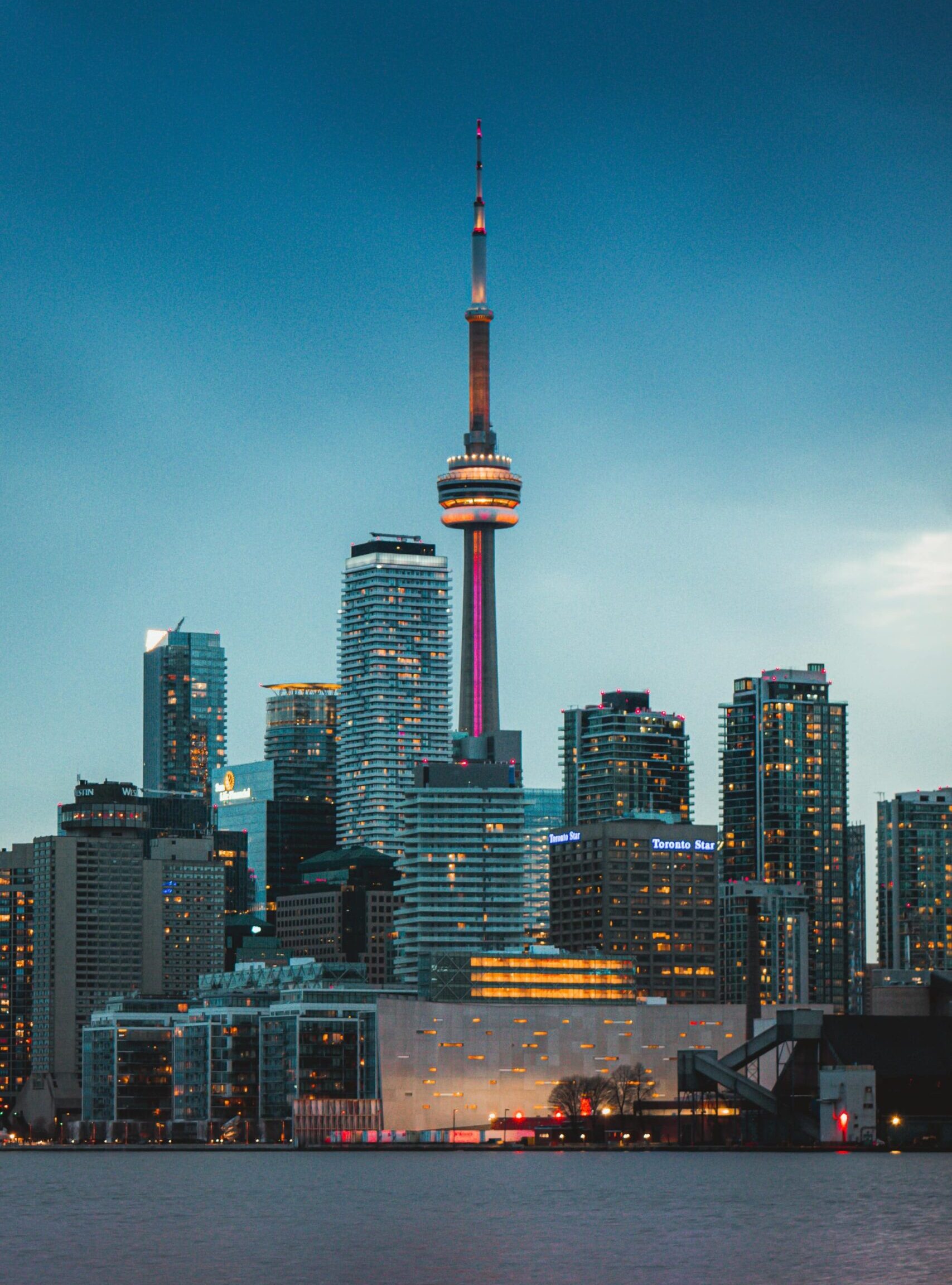
CN Tower
The CN Tower is a 553.3-meter-high concrete communication and observation tower in Toronto, Ontario, Canada. The initials “CN” stood for Canadian National, the railway corporation that erected the tower. It was the world’s highest free-standing construction for 32 years, from 1975 to 2007, and the tallest tower until 2009, when it was surpassed by the Canton Tower. The American Society of Civil Engineers named the CN Tower one of the current Seven Wonders of the World in 1995. It is also a member of the World Federation of Great Towers.
Royal Ontario Museum
The Royal Ontario Museum is an art, international culture, and natural history museum located in Toronto, Ontario, Canada. It is the largest museum in Canada and one of the largest in North America. Every year, over one million people visit the ROM, making it Canada’s most visited museum. The Museum metro station is named after the ROM and has been designed to look like the institution’s collection since a 2008 refurbishment. The museum’s broad collections of world culture and natural history contribute to its international prominence. It was founded on April 16, 1912 and inaugurated on March 19, 1914.
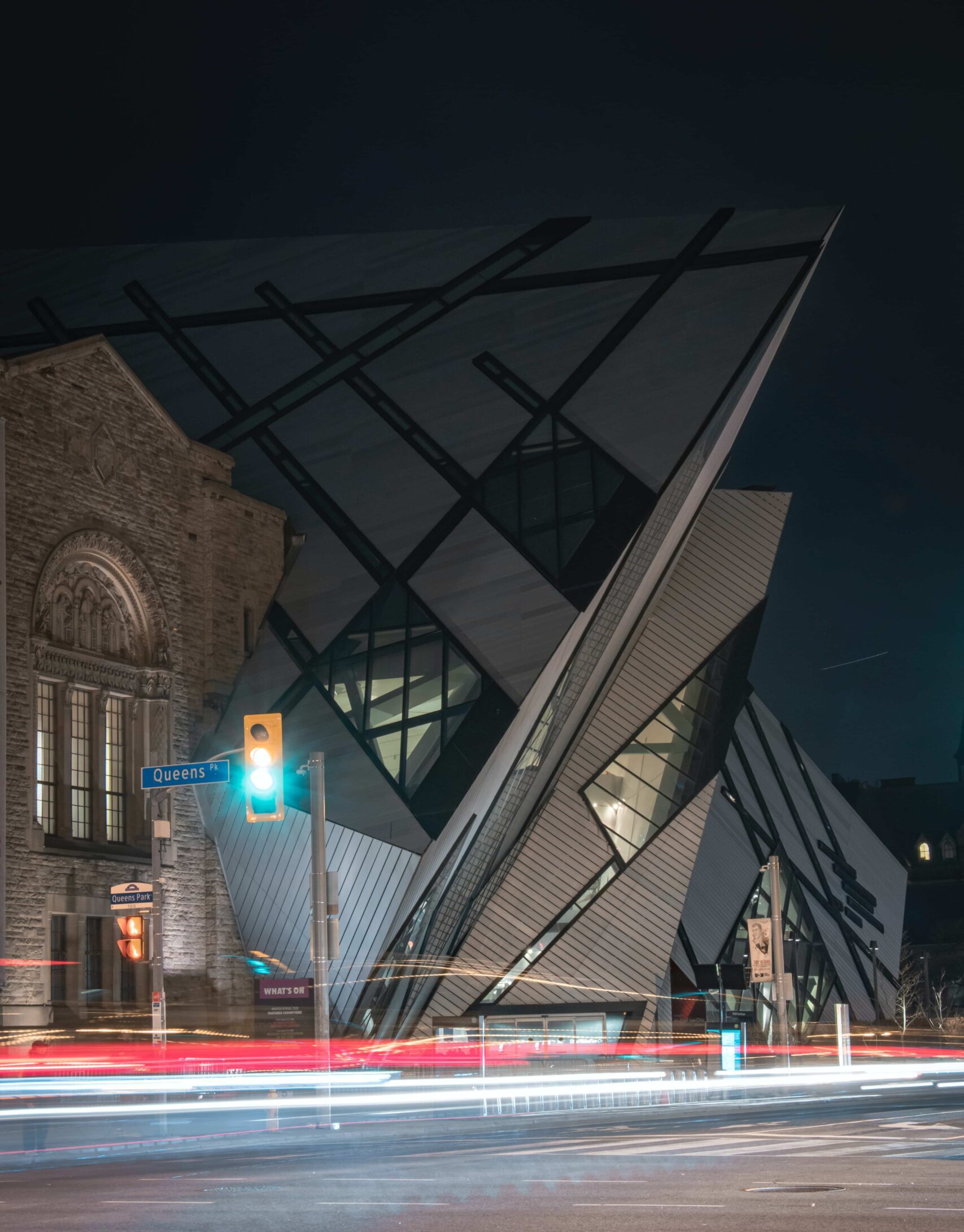

Banff National Park
Banff National Park was created in 1885 and is Canada’s oldest national park. It has 6,641 square kilometers of rugged terrain, including several glaciers and ice fields, dense coniferous forest, and alpine panoramas. The town of Banff, located in the Bow River valley, is the park’s primary business center. The Icefields Parkway connects Lake Louise to Jasper National Park in the north.
Stanley Park
Stanley Park is a 405-hectare public park on Vancouver’s Downtown Peninsula in British Columbia, Canada. The site had been used by Indigenous peoples for thousands of years before British colonization of British Columbia during the 1858 Fraser Canyon Gold Rush. When Vancouver incorporated in 1886, the area was transformed into the city’s first park. While not the largest, Stanley Park is around one-fifth the size of New York City’s Central Park or London’s Richmond Park.


Fairmont Le Château Frontenac
The Châteauesque-styled structure, which opened in 1893, is a historic hotel located in Quebec City, Quebec, Canada, has 18 stories and was declared a National Historic Site of Canada in 1981. Bruce Price designed the hotel, which was erected by the Canadian Pacific Railway corporation. The hotel was extended three times, with the most recent significant addition in 1993. Fairmont Hotels and Resorts manages the hotel.
7-day Itinerary in Canada
Day 1
Arrive at Montreal
Your first stop in your trip plan to Canada is Montreal, the best place to start your journey.
You have the following options, depending on the arrival time of your flight and your level of fatigue. If you’re planning on renting a car, pick it up and rest up so you can start your vacation the next day, or leave your luggage at the hotel and head to the streets!
If you want to do some sightseeing in Montreal and learn about the key points of interest and tourist attractions, we recommend starting with the Old Montreal neighborhood. The Notre-Dame Cathedral of Montreal, the Bonsecours Market, the Quai de l’horloge, and Jacques-Cartier Square are all great options to start with. Have some lunch, then continue the trek along the St. Lawrence River’s Old Port. A lovely spot to stroll around!
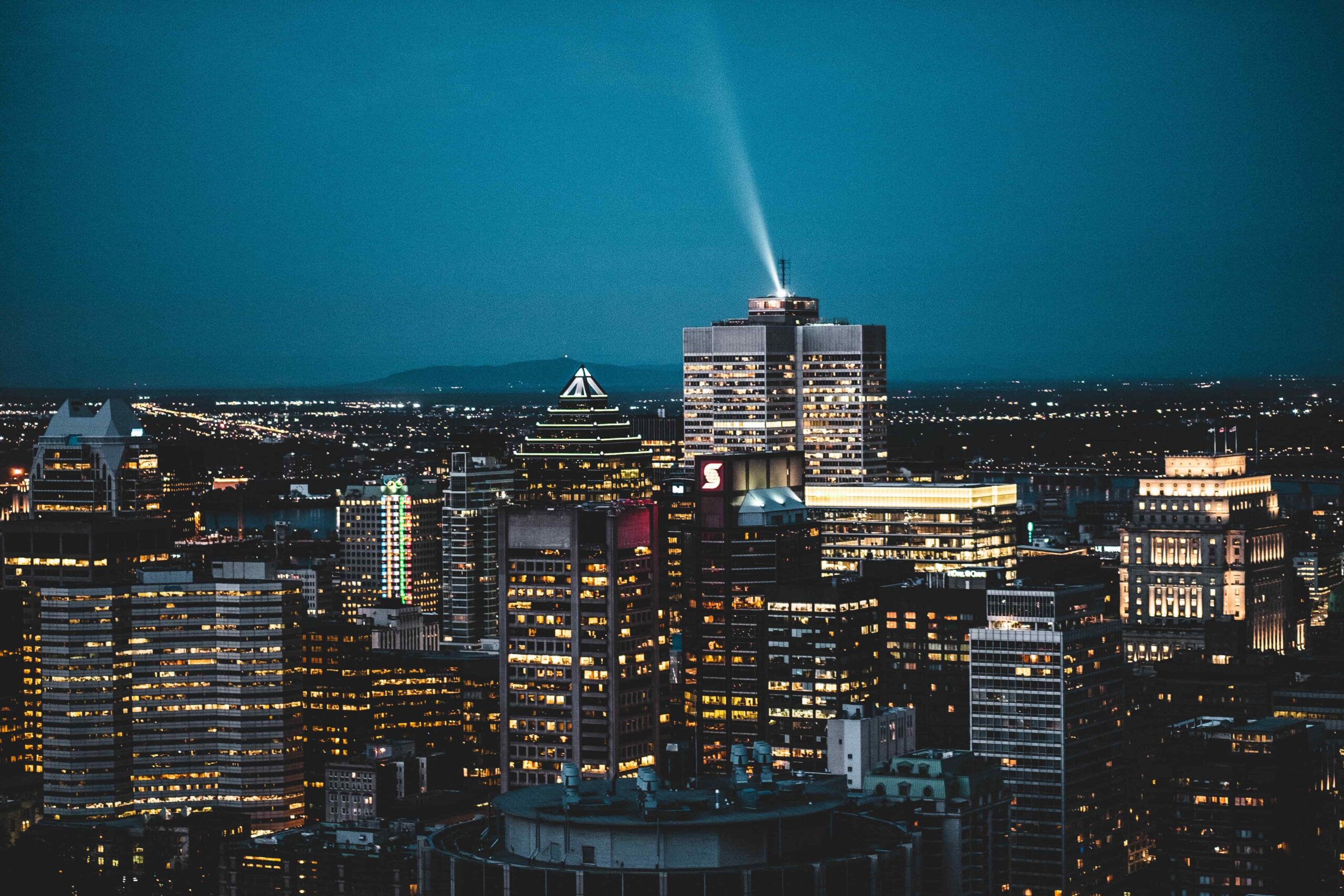

At the conclusion of the day, you can visit the Belvedere du Mont-Royal, which is located in the same park. You will enjoy a spectacular view of Montreal!
For the evening, you can immerse yourself in Canadian culture by experiencing poutine, the national dish, best tried in La Banquise, located in the Mont-Royal area, which will allow you to explore this traditional neighborhood with spiral stairs and colorful façade.
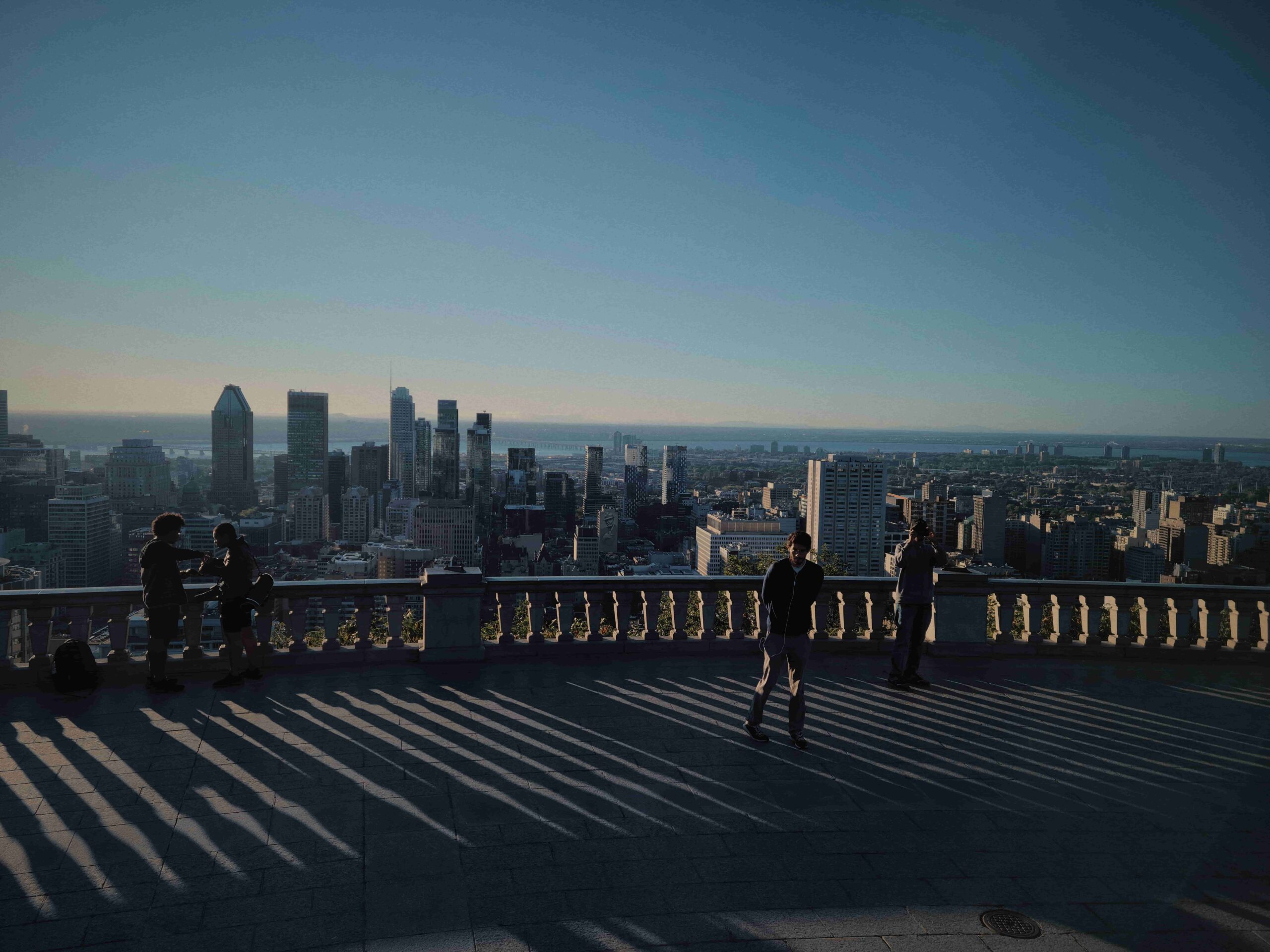
- Backpacker: M Montreal,
- Budget:
- Mid-range: Anne my sister Anne Hotel Studio,
- Luxury: Lofts of the Old Port
This section will be added shortly.
Day 2
Thousand Islands’ Cruise
On your second day in Canada you will head to Thousand Islands, situated midway between Montreal and Toronto and is about 3 hours away.
The boat cruise is a must-do tourist excursion in the Thousand Islands. Departures are from Rockport, Gananoque, or Kingston. You can choose between three voyage lengths: one hour, two and a half hours, and five hours. The cruises are available from May to October.
You will be navigating among some of the 1865 islands during the voyage! They are all unique: greater or smaller in size, occupied or not; huts, elegant homes, and even a castle have been erected on it. The landscape is breathtaking, and the trip is one of the must does in Canada.

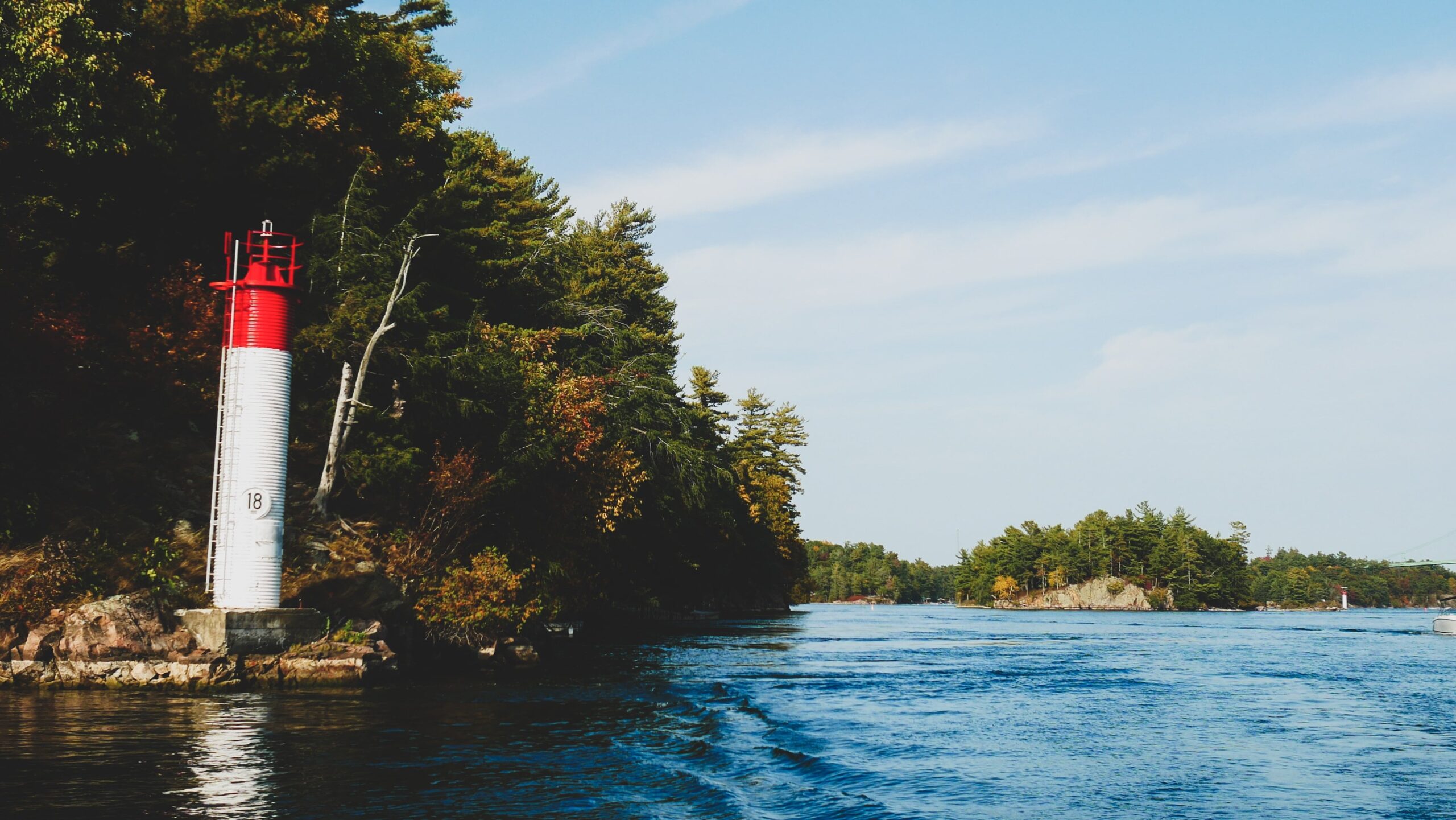
The castle on the island of Boldt has a unique story. It was created for tycoon Georges Boldt’s wife, but she died before it was done. The castle was abandoned for more than 70 years before being purchased for € 1 symbolic by the Thousand Islands society.
If you prefer a more personal experience, you may rent a private boat exclusively for you. It is, of course, more costly. You can also fly over the Thousand Islands by helicopter if you have a somewhat larger budget!

- Backpacker:
- Budget:
- Mid-range: Howard Johnson Gananoque,
- Luxury: Comfort Inn & Suites Thousand Islands Harbor District, Holiday Inn Express Hotel & Suites 1000 Islands
This section will be added shortly.

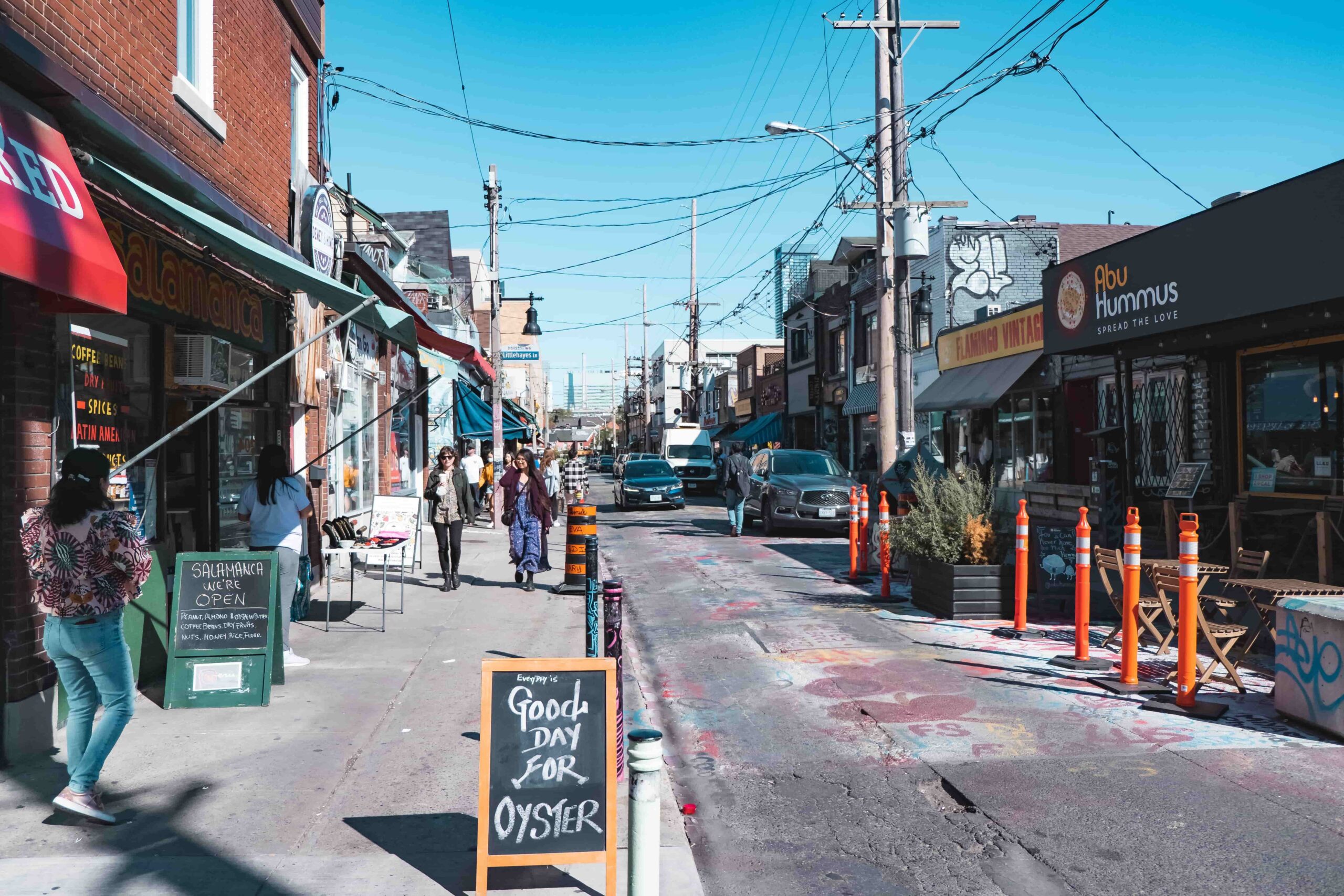
Days 3 to 5
Off to Toronto
From the Thousand Islands, it’s a 2 hours and 30 minutes of driving time
When you arrive in Toronto, begin by exploring Kensington Market, a bohemian district and one of Toronto’s oldest markets. It is very popular among Street Art enthusiasts.
It’s time to load up on magnets and mugs in Toronto’s Chinatown, where you’ll discover the cheapest souvenirs in the city!
The ancient Distillery area has been entirely renovated into a big pedestrian zone. Toronto’s stylish district has original businesses, art galleries, and hip coffee.
You can stop at St-Lawrence Market for lunch. The covered market, which is almost 200 years old, allows you to sample some of the best local items. You can eat on-site at the offered tables. The atmosphere is nice and welcoming.

When you’re done head up to the CN Tower, Toronto’s renowned landmark, towards the conclusion of the day. In approximately 58 seconds, a panoramic lift will take you to a height of 346 meters.
You can walk on a transparent glass floor and take in the breathtaking view of the entire city. The experience has been fantastic! The best time to visit is just before dusk.
And if you want adrenaline and thrills, try the Edge Walk. You can walk on the outside the edge of the tower, which is just 1.5 meters wide and is only controlled by a leash for $225, the price it self can be thrilling enough.
Finally, for a romantic ending to the day, dine at the CN Tower restaurant. Throughout the dinner, the restaurant revolves to give you a 360-degree panorama of Toronto.
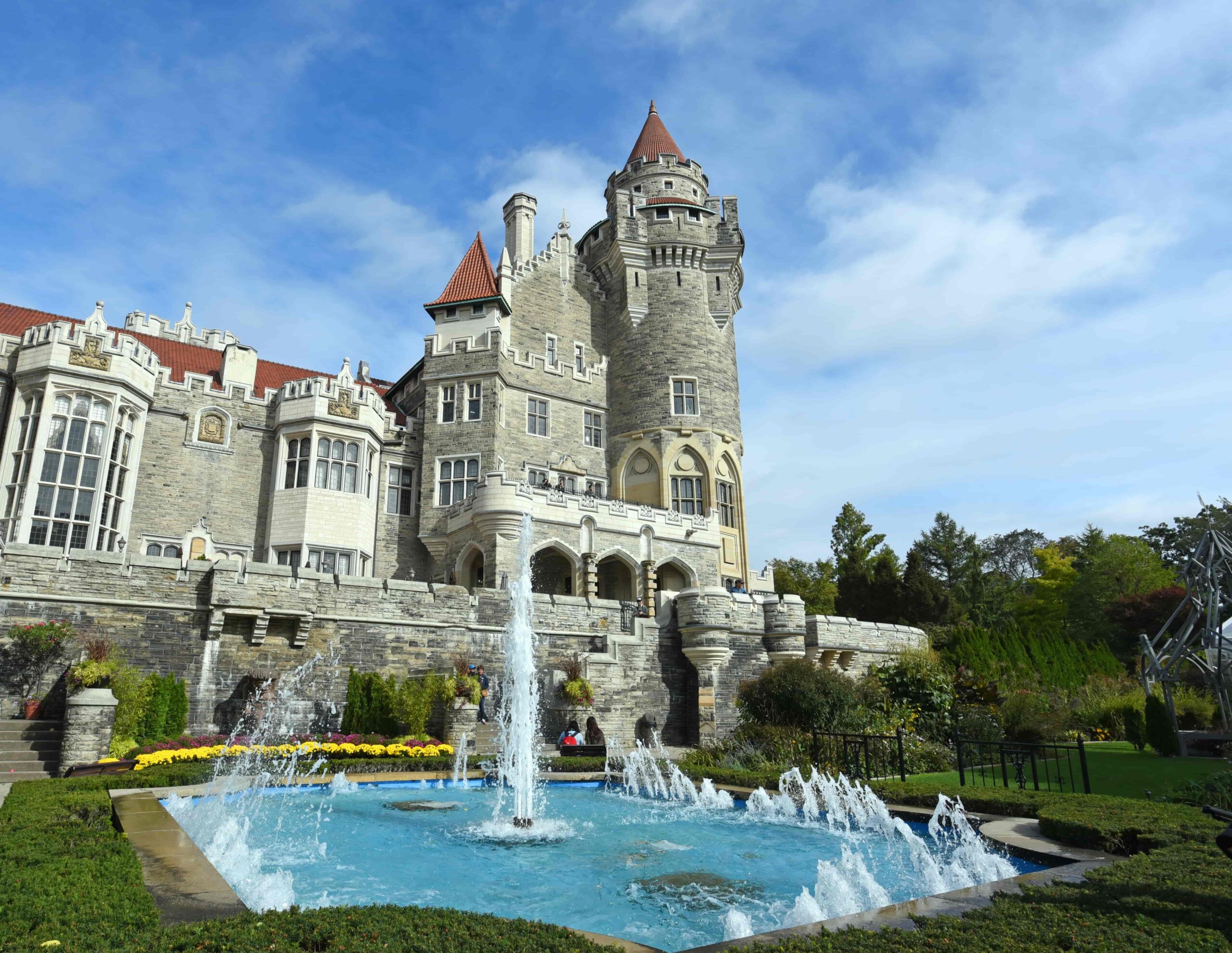

In your second day in Toronto part of your week-long stay in Canada, visit Casa Loma.
Casa Loma is a genuine medieval-style castle, which is unique in Canada! A $3.5 million whim at the time of a wealthy entrepreneur. It should be emphasized that he rapidly fell bankrupt and was unable to enjoy it for an extended period of time (the impoverished…).
The numerous rooms of the castle can be visited, but the most intriguing aspect is the view from the top of the turrets, which is simply one of the most magnificent in Toronto.
The 2-hectare Casa Loma garden is also extremely lovely to wander in, with fountains, sculptures, and flower displays.
The rest of the day in Toronto will be spent doing some cultural tourism, including a visit to the Royal Ontario Museum, Canada’s largest museum. You will not miss it with its architecture consisting of an ancient portion, stone, and a glass and aluminum construction.

The museum is interesting from a variety of disciplines, including First Nations history, foreign cultures, and natural history. There is also a section dedicated to dinosaur skeletons, which is a favorite amongst dino world lovers!
Then, to get away from the hustle and bustle of the city and discover some nature, spend the afternoon on Toronto’s islands. To get there fast, take the boat from Queens Quay. The excursion provides an opportunity to observe one of Toronto’s most spectacular skyline vistas. Because everything is lighted, the night is much more gorgeous.
Because automobiles are not permitted on the islands, you can rent a bike instead. It’s really beautiful and calm, there are several beaches for swimming or relaxing, and the 1920s holiday homes are quite interesting to visit. You can also take a boat tour to see them all if you wish.
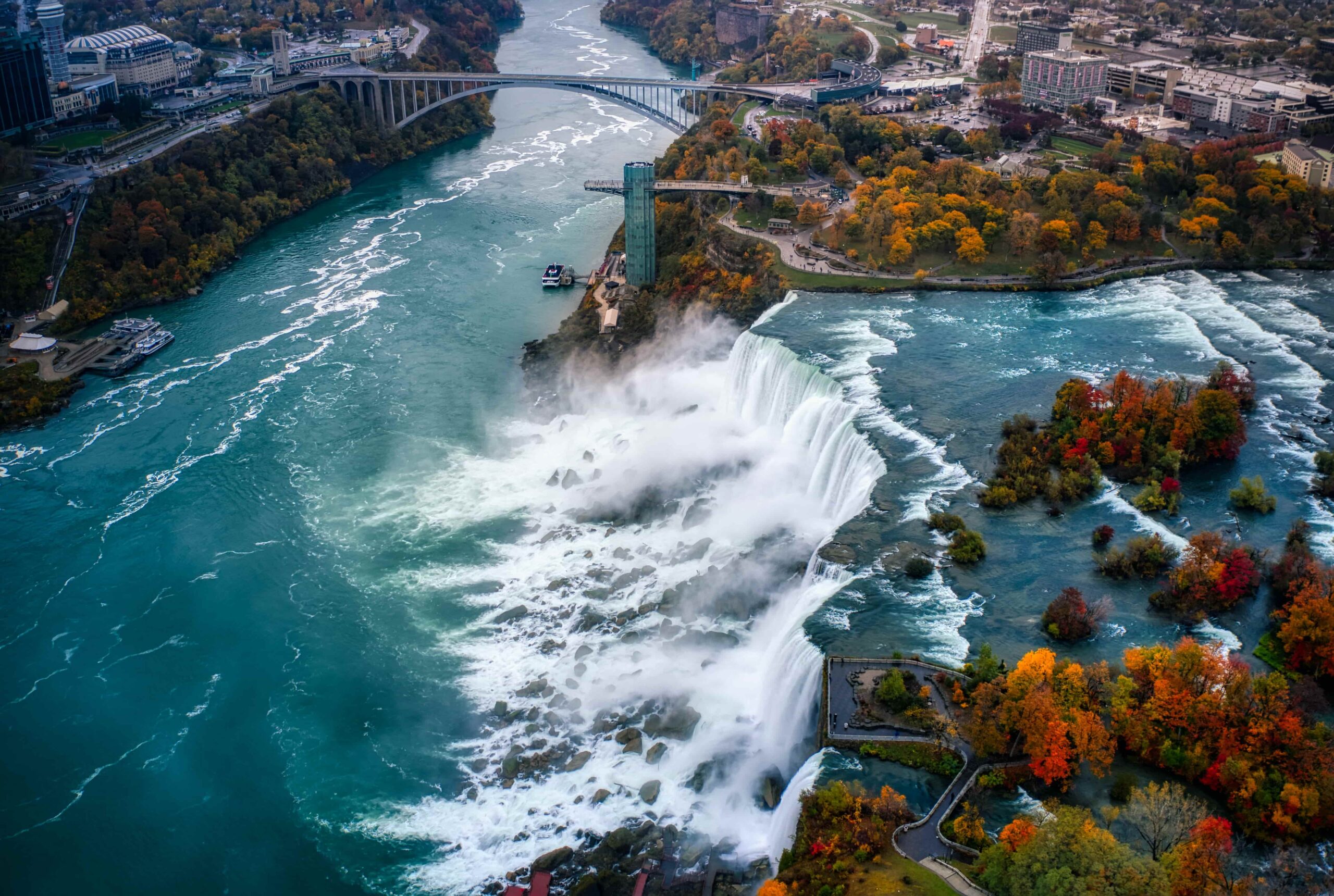

Discover the renowned destination of the province of Ontario, Niagara Falls, for the remainder of your 5 to 8-day vacation in Canada. The falls are around a 90-minute drive away from Toronto.
Niagara Falls is extremely breathtaking; it is one of Canada’s must-see attractions! The greatest and most magnificent way to see them is to take a boat to the base of the falls. You’ll go closer to Niagara Falls while wearing a lovely poncho, and you’ll be drenched (for a good cause).
You can also go up the top of the Skylon Tower after the cruise to witness the falls from the panoramic terrace.
If you want to have an out-of-the-ordinary experience, fly above the falls on a helicopter. This is the kind of location that deserves to shatter a small piggy bank. You’ll remember it for the rest of your life!
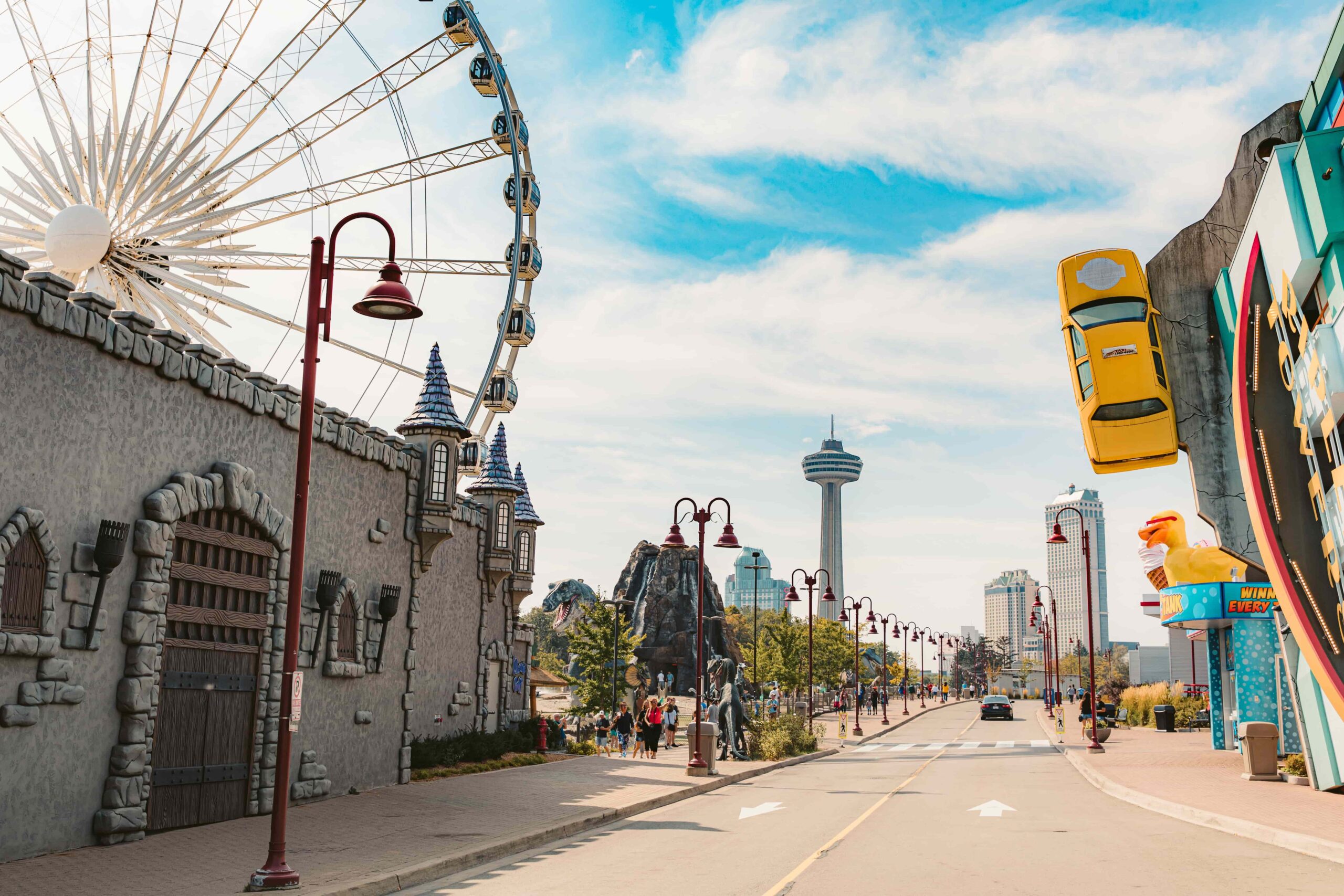
There is no need to concentrate on the city of Niagara Falls for any longer than is necessary. If you like, you may take a tour of Clifton Hill, a street dotted with various attractions such as a wax museum and a haunted home. But seeing the kitsch of the item is a must!
Spend the rest of the day on the Niagara Parkway, which runs along the Niagara River between Niagara Falls and the village of Niagara-on-the-Lake.
- Backpacker: Hostel Toronto
- Budget: Upper Beaches Studio Apartment
- Mid-range: Toronto Luxury Guesthouse, Downtown Home Inn B&B,
- Luxury: Paradise Suites Toronto, City * Stay Condos – Simcoe Street, The Omni King Edward Hotel,
This section will be added shortly.
Day 6
Head to Ottawa
After spending three days in Toronto and seeing the Niagara Falls, continue your week-long road vacation in Canada by driving to Ottawa, roughly a 4 hour of driving; this is the longest route you will have to go on this route. So its best that you travel early in the morning to reach Ottawa during the lunch hour.
Go to the Byward Market for lunch. Visitors can dine on the move with some fresh local vegetables or at one of the area’s many eateries. For dessert, try a beaver tail, a typical Canadian confection. The Byward Market is close to Parliament Hill, the city’s primary tourist attraction, so you may finish your day by viewing it. This hill is home to all of Canada’s Parliament Buildings.
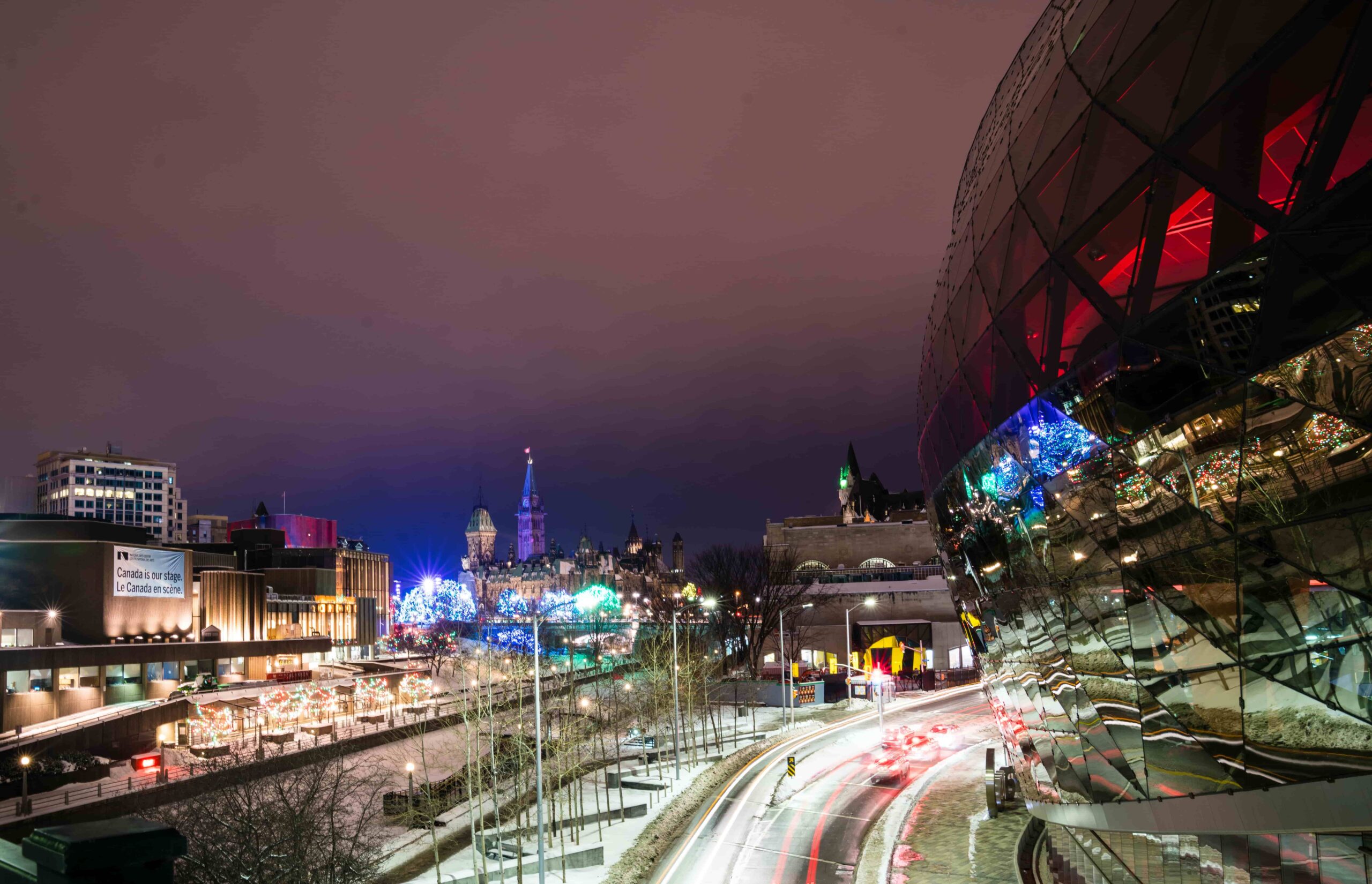
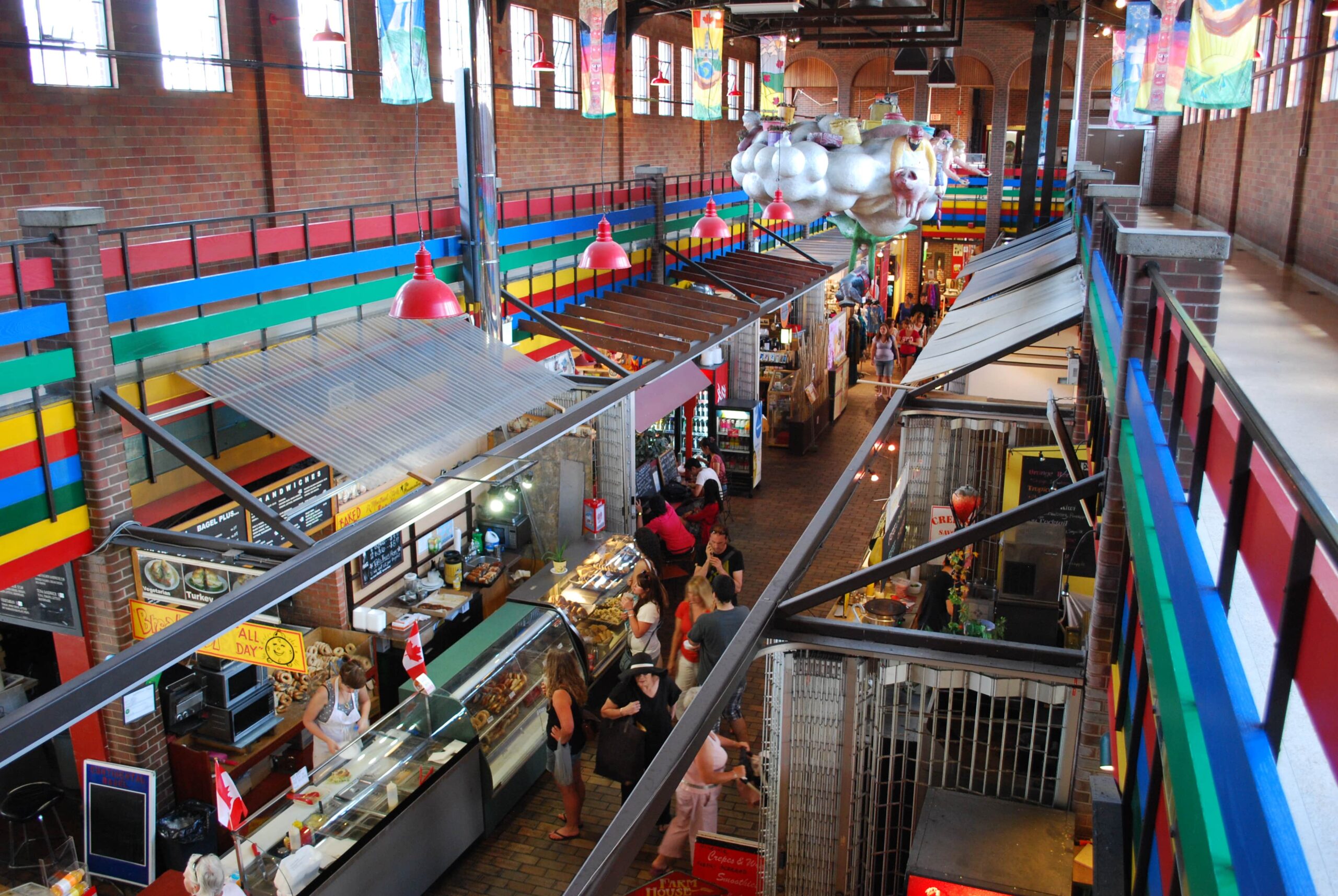
Then go to one of Canada’s greatest and most interesting museums, the Canadian Museum of History, a must cultural activity in Ottawa. The museum chronicles Canada’s history back to the earliest nations. This is where you’ll discover the world’s largest collection of totems! The museum is really well-designed and entertaining. You will not be sorry if you spend at least three hours there in the afternoon.
Head to the Rideau Canal at the end of the day for a stroll along its UNESCO World Heritage-listed shoreline. If you visit Ottawa in the winter, you can also go ice skating. The Rideau Canal has been turned into the world’s biggest natural ice rink!
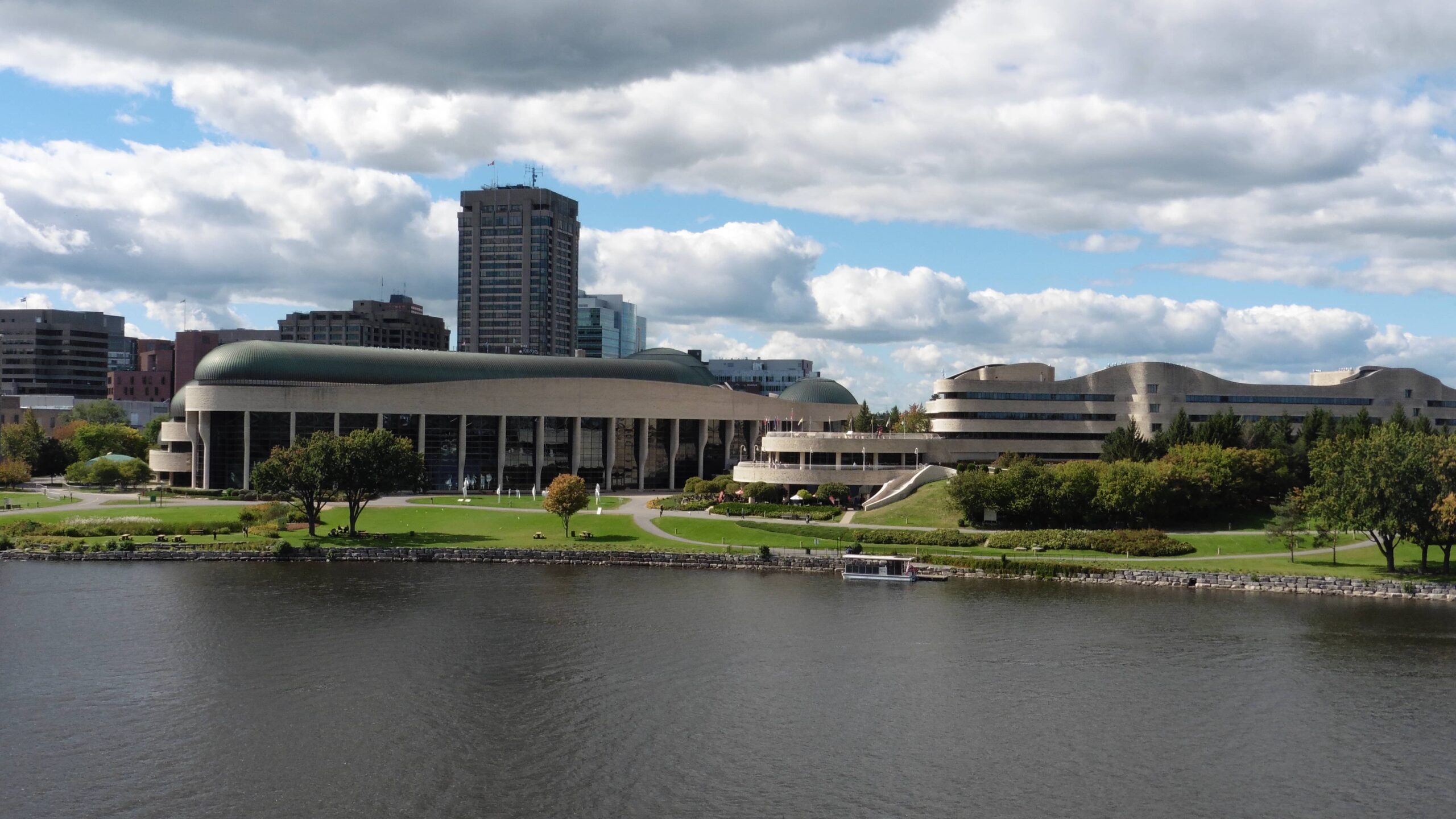

- Backpacker: Auberge HI Mont-Tremblant
- Budget:
- Mid-range: Comfort Inn & Suites Mont-Tremblant
- Luxury: Escale du Nord, Grand Lodge Mont-Tremblant, Fairmont Tremblant Hotel
This section will be added shortly.


Day 7
Last Stop at Mont-Tremblant
Head to Mont-Tremblant for the fifth and last stage of your one-week adventure to Eastern Canada, a roughly 2 hour drive from Ottawa. On the way, stop at Montebello. If you are traveling with children, this is the excellent activity for families. Omega Park offers you to explore numerous creatures from Canada while travelling in your automobile. Animals are free to roam: you will be able to feed some of them and examine them as closely as possible.
Join Mont-Tremblant in the late afternoon. Hiking in the park is the greatest way to explore Mont-Tremblant. The rock and cornice trail is one of the most easily accessible.
You can also enjoy water sports at the lake (in the summer) or skiing (in winter). If you get the opportunity to do this week-long trip to Canada in the fall, you will be mesmerized by the glistening colors of the trees! Also, don’t forget to take a stroll through the pedestrian village.
- Backpacker: HI Ottawa Jail Hostel
- Budget:
- Mid-range:
- Luxury: The Business Inn, Andaz Ottawa Byward Market-a concept by Hyatt, Fairmont Château Laurier
This section will be added shortly.
Day 8
Departing from Montreal
All good things come to an end, and the final stage of this 7-8 day vacation to Canada leads you back to where you started, Montreal.
An hour and a half drive from Mont-Tremblant awaits you. Depending on the time of your return flight, you can either fly directly to the airport or see more of Montreal!
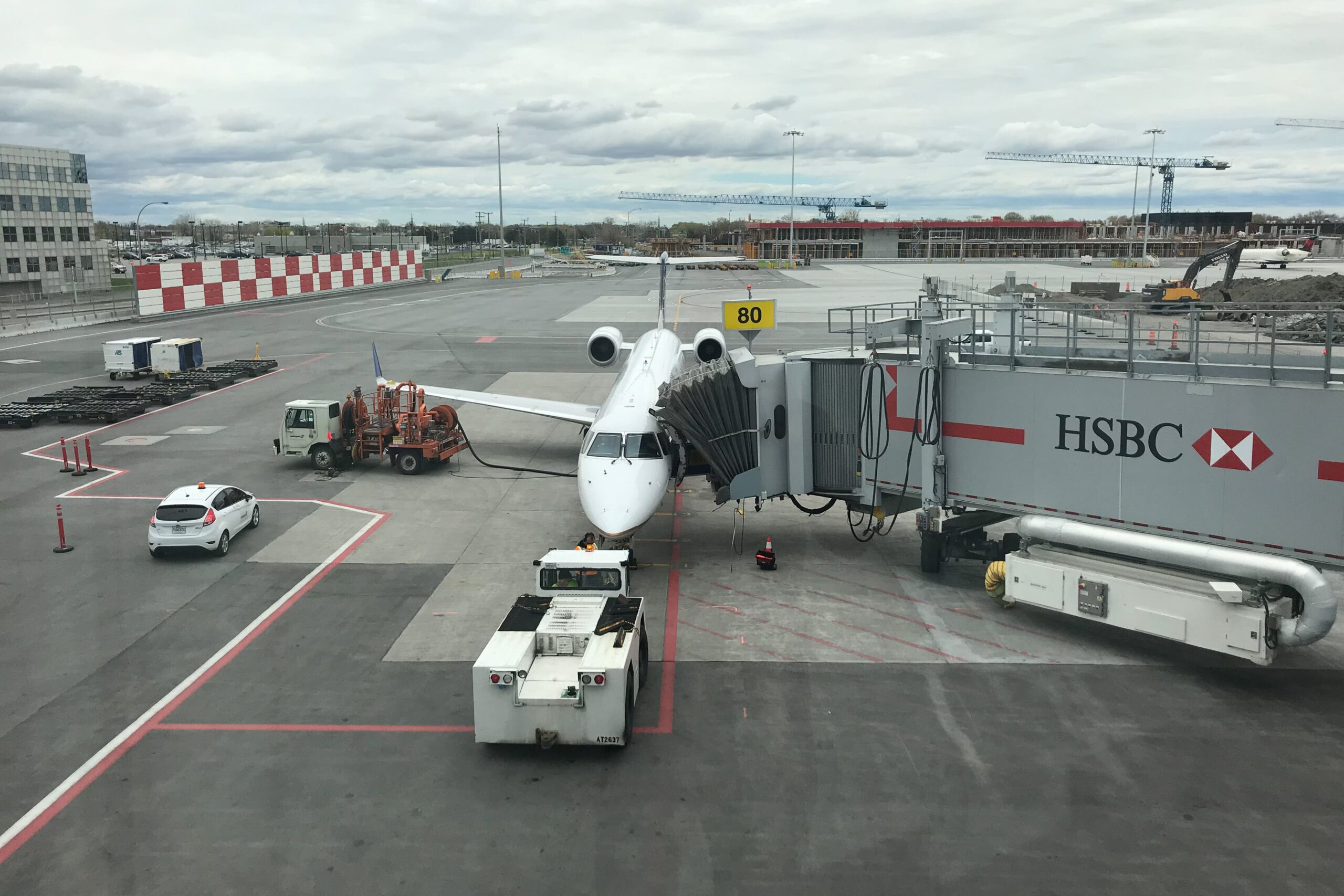
The Most Popular Food in Canada
Canada is well-known for its provincial delicacies as well as its worldwide cuisine. Many foreign restaurants may be found in big cities such as Vancouver and Toronto, and many of the dishes are influenced by European and Asian cooking methods. In smaller towns, there are usually a few chain restaurants as well as a few local eateries that are usually pretty good and cheaply priced. If you’re camping, grilling is a fantastic alternative because most big parks have food stores nearby. This is also a fantastic method to save money on groceries.
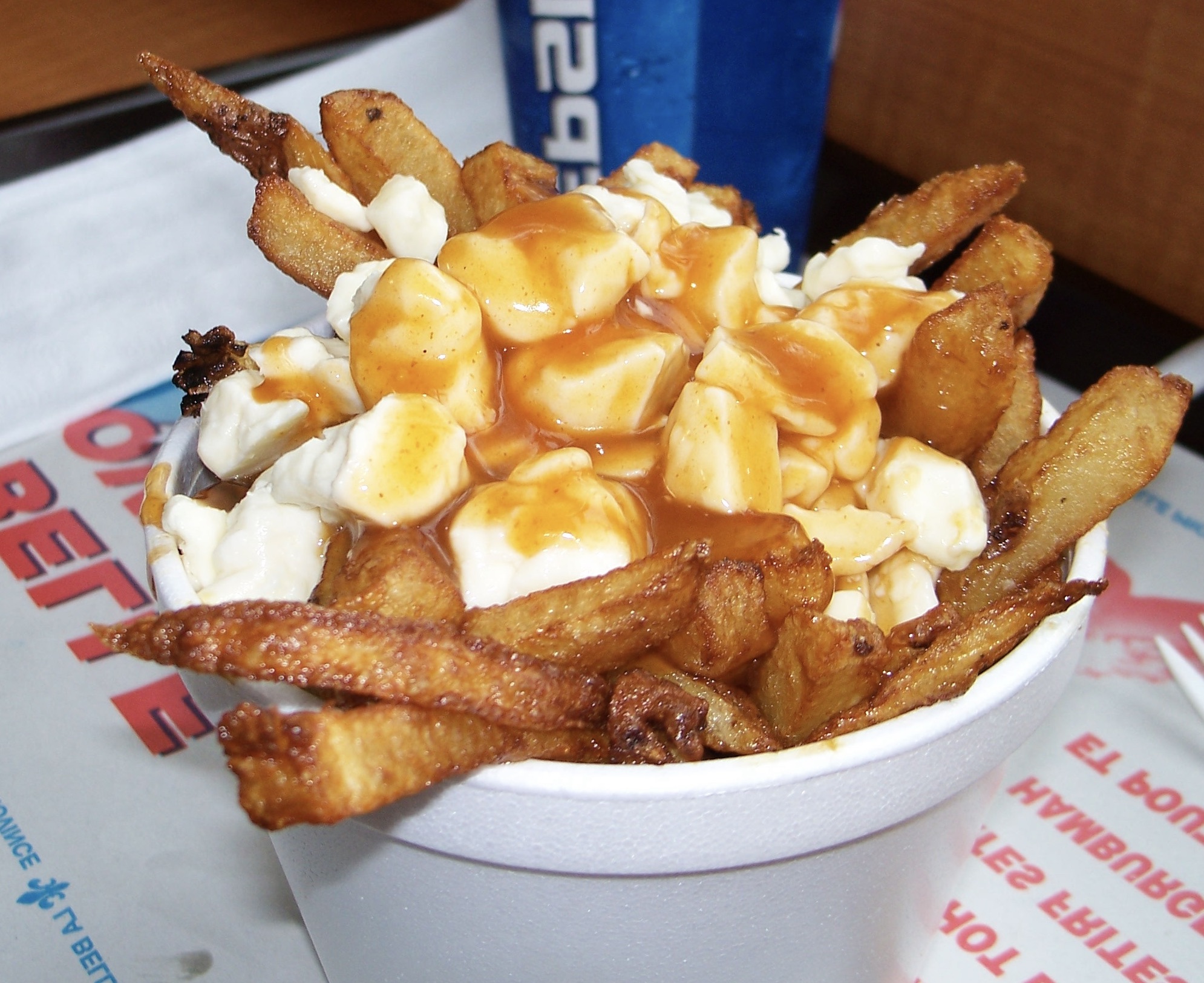
Poutine
Poutine is a popular Canadian meal made with french fries, cheese curds, and brown gravy. It began as a regional speciality in Quebec and has now spread throughout the country. It may be found at most diners and cafes, as well as major fast food franchises such as McDonald’s, KFC, and Burger King.
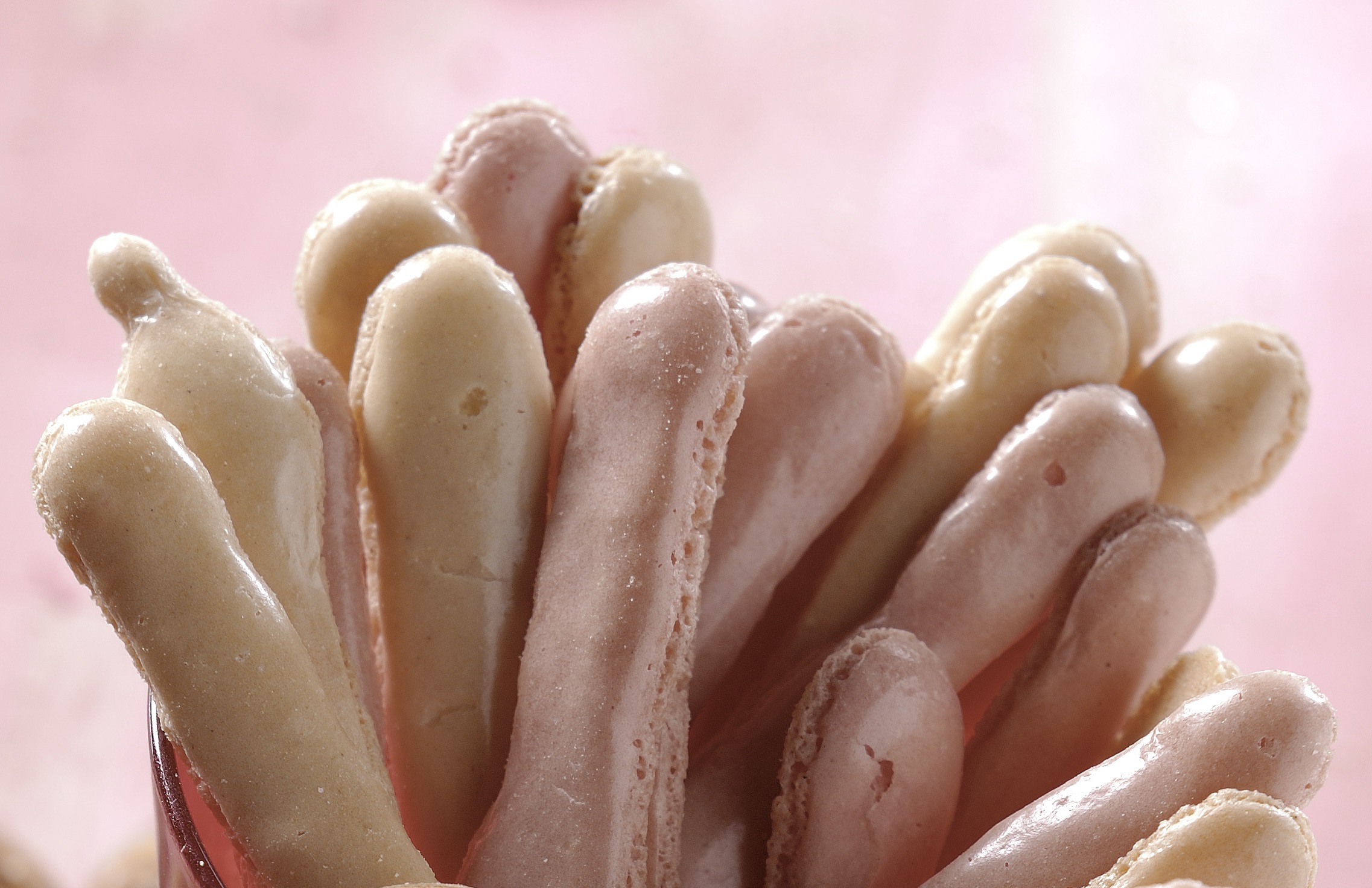
Croquignoles
This is a fantastic homemade version of a shortening-fried doughnut. It is available in a variety of restaurants around Canada. Although it is not particularly nutritious, it is delicious.
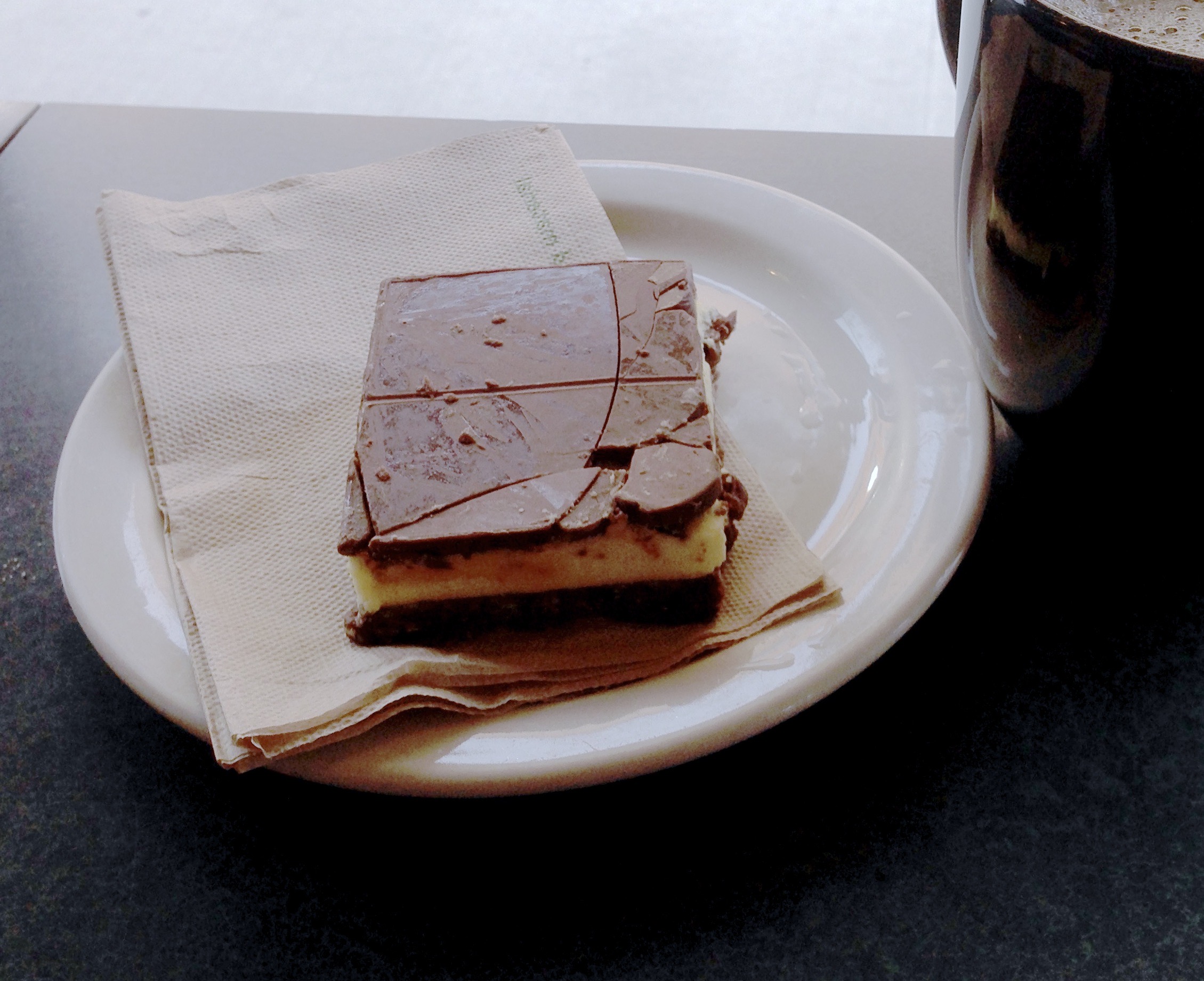
Nanaimo Bars
A nanaimo bar is a delicacy comprised of custard or vanilla-filled squares. It has a crumb foundation and is topped with chocolate. It’s a cookie-based bar that doesn’t require baking and is widely available in Canada.

Tourtière
Tourtière is a classic French Canadian meal that rose to prominence in the 1600s. This hearty Canadian supper meal is available all year at Quebec grocery stores, but it is especially popular over the holidays.
Made using pork, beef, and veal, as well as herbs and spices, mashed potatoes (to make it firm), and flaky pastry dough. People in coastal areas even add ground fish to the mix.

Montreal-Style Smoked Meat
Montreal’s smoked meat is made from beef brisket that has been cured and marinated for a week with lots of spices before being smoked and steamed. This meat dish can be used as a fancy topper for your poutine or a filling for your rye bread sandwich.
Schwartz’s Deli’s Montreal smoked meat sandwiches have gained international acclaim, with some devotees hailing it as one of Canada’s top restaurants and is one of the best places to try this famed smoked meat.
What's the Travel Budget for Canada?
Flights
- Flights start at roughly $140 from nearby countries. Tickets however on average cost around $600 and can cost way more depending on which class and from which country you depart from.
Accommodation
- Nomad Backpacking style travelers can expect to spend around $410 for a week
- Budget travelers can expect to spend around $550 for a week
- Mid-range travelers can expect to spend around $830 for a week
- Luxury travelers can expect to spend around $1,420 for a week
Food Budget (Three meals and drinks)
- Nomad Backpacking style travelers can expect to spend around $22 per person per day
- Budget travelers can expect to pay around $35 per person per day
- Mid-range travelers on average would cost $40 to $60 per person per day
- Luxury travelers can expect to pay around $70 to $130 per person per day
Overall Budget Styles (Not including Flights, Tours, Transportation, or Car Rental)
- Nomad Backpacking style travelers can expect to spend roughly $580 for a week
- Budget travelers can expect to spend close to $850 for one person for a week
- Mid-range travelers can expect to spend approximately $1,280 for one person for a week
- Luxury travelers can expect to spend around $2,350 for one person for a week
Flights
- Flights start at roughly $210 from nearby countries. Tickets however on average cost around $550 and can cost way more depending on which class and from which country you depart from.
Accommodation
- Nomad Backpacking style travelers can expect to spend around $190 for a week
- Budget travelers can expect to spend around $275 for a week
- Mid-range travelers can expect to spend around $450 for a week
- Luxury travelers can expect to spend around $690 for a week
Food Budget (Three meals and drinks)
- Nomad Backpacking style travelers can expect to spend around $10 per person per day
- Budget travelers can expect to pay around $16 per person per day
- Mid-range travelers on average would cost $20 to $35 per person per day
- Luxury travelers can expect to pay around $40 to $55 per person per day
Overall Budget Styles (Not including Flights, Tours, Transportation, or Car Rental)
- Nomad Backpacking style travelers can expect to spend roughly $320 for a week
- Budget travelers can expect to spend close to $450 for one person for a week
- Mid-range travelers can expect to spend approximately $730 for one person for a week
- Luxury travelers can expect to spend around $1,100 for one person for a week
Flights
- Flights start at roughly $210 from nearby countries. Tickets however on average cost around $550 and can cost way more depending on which class and from which country you depart from.
Accommodation
- Nomad Backpacking style travelers can expect to spend around $190 for a week
- Budget travelers can expect to spend around $275 for a week
- Mid-range travelers can expect to spend around $450 for a week
- Luxury travelers can expect to spend around $690 for a week
Food Budget (Three meals and drinks)
- Nomad Backpacking style travelers can expect to spend around $10 per person per day
- Budget travelers can expect to pay around $16 per person per day
- Mid-range travelers on average would cost $20 to $35 per person per day
- Luxury travelers can expect to pay around $40 to $55 per person per day
Overall Budget Styles (Not including Flights, Tours, Transportation, or Car Rental)
- Nomad Backpacking style travelers can expect to spend roughly $320 for a week
- Budget travelers can expect to spend close to $450 for one person for a week
- Mid-range travelers can expect to spend approximately $730 for one person for a week
- Luxury travelers can expect to spend around $1,100 for one person for a week
Flights
- Flights start at roughly $210 from nearby countries. Tickets however on average cost around $550 and can cost way more depending on which class and from which country you depart from.
Accommodation
- Nomad Backpacking style travelers can expect to spend around $190 for a week
- Budget travelers can expect to spend around $275 for a week
- Mid-range travelers can expect to spend around $450 for a week
- Luxury travelers can expect to spend around $690 for a week
Food Budget (Three meals and drinks)
- Nomad Backpacking style travelers can expect to spend around $10 per person per day
- Budget travelers can expect to pay around $16 per person per day
- Mid-range travelers on average would cost $20 to $35 per person per day
- Luxury travelers can expect to pay around $40 to $55 per person per day
Overall Budget Styles (Not including Flights, Tours, Transportation, or Car Rental)
- Nomad Backpacking style travelers can expect to spend roughly $320 for a week
- Budget travelers can expect to spend close to $450 for one person for a week
- Mid-range travelers can expect to spend approximately $730 for one person for a week
- Luxury travelers can expect to spend around $1,100 for one person for a week
If you want to know what to pack, read this list below:
- This is a casual country that can get extremely hot or too rainy, dress accordingly
- Raincoat or Light Waterproof Jacket
- Hiking Boots or Sturdy Sneakers (Shoes You Don’t Mind Getting Wet)
- Sunscreen
- Insect Protection – Repellent and Clothing
- Sunglasses and Sun Hat
- Water Shoes
- Beach Towels/Sarong
- Dry Bag
- Money Belt or Cross Bag
- Portable Medical Kit
- Flashlight or Headlamp
- Copies of your passport.
- Get all the needed vaccinations before traveling
- A power bank is a must in any travel.
- Always have some cash with you just in case there are no ATMs and if you are dealing with a business that solely accepts cash
- Get yourself an adapter for your gadgets
- 1 toothbrush
- 1 tube of toothpaste
- 1 razor
- 1 package of dental floss
- 1 small bottle of shampoo
- 1 small bottle of shower gel
- 1 towel
- Deodorant
- Band-Aids
- Hydrocortisone cream
- Antibacterial cream
- Earplugs
- Tylenol
- Hand sanitizer (germs = sick = bad holiday)
- A key or combination lock
- Zip-lock bags
- Plastic bags (great for laundry)
- Universal charger/adaptor
- LifeStraw (A water bottle with a purifier)
- 1 dry shampoo spray & talc powder
- 1 hairbrush
- Makeup you use
- Hairbands & hair clips
- Feminine hygiene products
Clothing For Boys
- 1 pair of jeans or khaki pants
- 1 pair of shorts
- 1 bathing suit
- 5 T-shirts
- 1 long-sleeved T-shirt
- 1 pair of flip-flops
- 1 pair of sneakers
- 6 pairs of socks
- 5 pairs of boxer shorts
Clothing For Girls
- 1 swimsuit
- 1 sarong
- 1 pair of stretchy jeans
- 1 pair of leggings
- 2-3 long-sleeve tops
- 2-3 T-shirts
- 3-4 spaghetti tops
- 1 light cardigan
Want to plan your own trip, here are some of the best resources that can help you
- Skyscanner – They search small websites and budget airlines that larger search sites tend to miss. They are hands down the number one place to start.
- Momondo – This is another favorite flight search engine because they search such a wide variety of sites and airlines. Always check here too.
- Booking.com – The best all-around booking site that constantly provides the most affordable and lowest rates. They have the widest selection of budget accommodation.
- Couchsurfing – This website allows you to stay on people’s couches or spare rooms for free. It’s a great way to save money while meeting locals who can tell you the ins and outs of their city. The site also lists events you can attend to meet people (even if you’re not staying with someone).
- Intrepid Travel – If you want to do group tours, go with Intrepid. They offer good small group tours that use local operators and leave a small environmental footprint.
- Grassroots Volunteering – For volunteering, Grassroots Volunteering compiles a list of good local volunteer organizations that keep the money within the community.
- Get Your Guide – Get Your Guide is a huge online marketplace for tours and excursions. They have tons of tour options available in cities all around the world, including everything from cooking classes, walking tours, street art lessons, and more! It has the world’s largest collection of things to do with more than 30,000 activities in 7500 destinations.
- SafetyWing – Safety Wing offers convenient and affordable plans tailored to digital nomads and long-term travelers. They have cheap monthly plans, great customer service, and an easy-to-use claims process that makes it perfect for those on the road.
- Trip Advisor: Check the reviews and then book your accommodation. TripAdvisor is where you go when you want to compare prices with multiple accommodation providers.
- VRBO: is the main search engine to use when you are looking for a home or apartment rental. It can sometimes be cheaper than hotels and it is the best way to stay in areas that offer a more local feel.
- Hostelworld: With one of the largest databases of hostels in the world, Hostelworld is the go-to site when you are looking for budget accommodation.
- Rome 2 Rio: If you want to see how to get somewhere by plane, train, bus, ferry, or car Rome2Rio lays it all out for you as well as related costs.
- World Nomads Insurance: When traveling you should always have travel insurance. We have found the best bang for your buck is by far World Nomads.
Final Thoughts on Canada
Canada has a sophisticated and rich past that is seen across the country, with its former colonial buildings, early settlers, stunning and distinct landmarks, genuine hospitality, vibrant festivities and dances, and a breathtaking environment. Canada is an excellent destination for anyone looking for an off-the-beaten-path experience in a modern and highly advanced country, filled with beautiful parks. Canada’s beauty is spectacular, with its amazing national parks, wildlife, and breathtaking views. Would you visit Canada?
Have you been to Canada? Please leave your opinions in the space below.